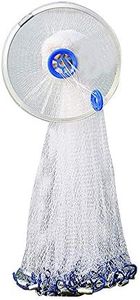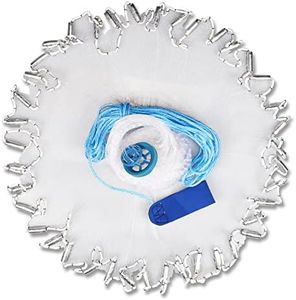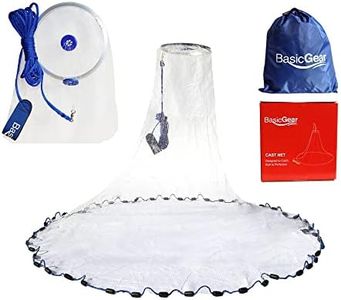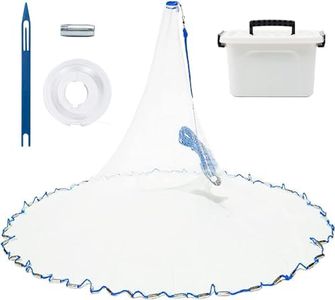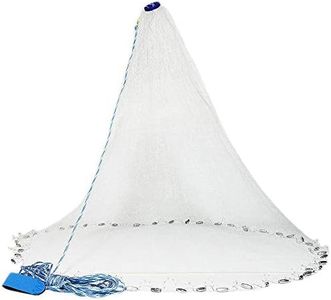We Use CookiesWe use cookies to enhance the security, performance,
functionality and for analytical and promotional activities. By continuing to browse this site you
are agreeing to our privacy policy
10 Best Cast Nets
From leading brands and best sellers available on the web.Buying Guide for the Best Cast Nets
Choosing the right cast net is all about matching your fishing style, skill level, and the type of bait you're after. Cast nets are a popular tool for catching live bait in both freshwater and saltwater environments. When selecting one, you need to consider several key specifications to ensure the net is easy for you to throw, effective in the waters you'll be using it in, and suitably sized for the baitfish you want to catch. Taking some time to understand these specs will help you make a choice that suits your needs and helps you fish more efficiently.Net DiameterNet diameter is the measurement across the fully spread net. This determines how much area the net covers when thrown. Smaller diameters, like 4-6 feet, are perfect for beginners or those targeting bait in tight or shallow spaces, since they're easier to throw and handle. Medium diameters, roughly 7-8 feet, are good for intermediate users who want a balance of coverage and manageability. Large nets, 9 feet or more, cover much bigger areas and catch more bait in one throw, but require more skill and strength to use effectively. Pick a diameter based on your throwing ability and the typical size of your fishing area.
Mesh SizeMesh size refers to the size of the individual holes in the netting. This directly affects what size bait the net can catch without them escaping or getting damaged. Fine mesh (1/4 inch) is best for catching small baitfish or shrimp. Medium mesh (3/8 inch) works well for general-purpose bait like pilchards and small mullet. Large mesh (1/2 inch or bigger) is intended for larger baitfish and reduces drag when throwing, making it sink faster. You should choose mesh size based on the size of the bait you most often target.
Net MaterialMost modern cast nets are made from mono or nylon material, both of which impact durability and handling. Monofilament nets are lighter, sink faster, and are less visible underwater, but can tangle more easily and may not last as long as nylon. Nylon nets are more durable, easier to untangle, but tend to be heavier and more visible in the water. Your choice depends on your preference for ease of use, visibility concerns, and how rough your typical fishing spots are.
Weight per FootThe weight per foot refers to how much lead (or sometimes steel or zinc) weight is attached along the bottom of the net. This determines how fast the net sinks. A light net with 0.75-1 pound per foot sinks slowly, suitable for shallow waters or very small bait. A medium net with 1-1.25 pounds per foot is a good general choice for most scenarios. Heavier nets with 1.5 pounds or more sink fast, ideal for deeper water and big, fast-swimming bait, but are harder to throw. The right weight depends on the depth of water where you fish and how fast your bait swims.
Handline LengthThe handline is the rope you hold when you throw and pull back the net. Standard handlines are often 20 to 30 feet long, but some nets come with longer or shorter lines. In shallow water, a shorter line is easier to manage. In deeper water or from a high dock, you’ll need a longer handline to ensure the net reaches the bottom. Choose the handline length based on where you'll be casting from and how deep the water is.
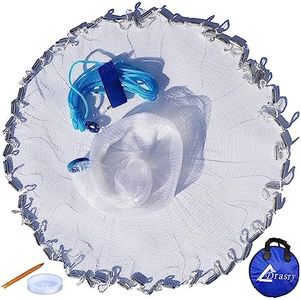
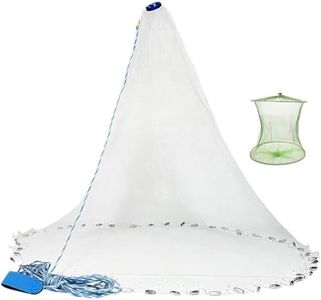
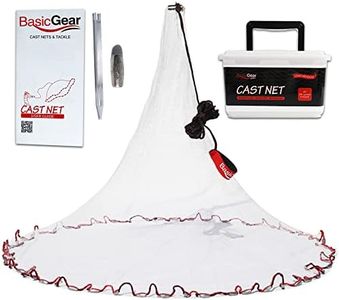
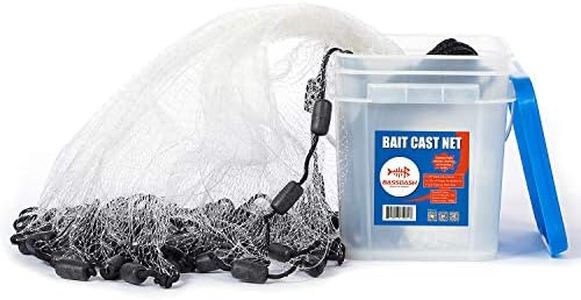
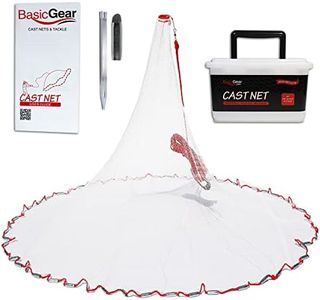
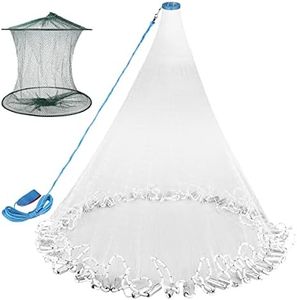
![Cast Net, Casting Nets for Bait Fish Fishing Cast Net Throw Net for Saltwater Size 8ft/10ft Radius Freshwater Nets[ 7.9ft]](https://images-proxy.bestreviews.guide/UaSTOQ-OlpyTolrkv_t5CTaDD6Y=/0x300/https://m.media-amazon.com/images/I/41dVkSUONDL._AC_CX679_.jpg)
